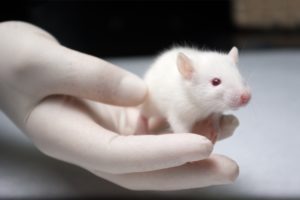There couldn’t be more at stake for more than five million Americans who suffer from the debilitating and memory-stealing Alzheimer’s disease.
Treatment costs hundreds of billions of dollars annually in the US, but there’s new hope.
A recent study in the Journal of Experimental Medicine provides the first evidence that there may be a way to flip the switch of a single protein and prevent or reverse the neurodegenerative disease.
By turning off the protein, BACE1, future medicines might dissolve the accumulation of plaques that bring on the disease as reported by National Geographic.
WATCH: ONE EXPERT’S LONGEVITY COCKTAIL
BACE1 has a significant role in neural development forming beta amlyoid plaques, the gluey clumps of proteins which are found in the brains of Alzheimer’s patients.
Scientists imagine that the plaque proteins build up, stopping nerves from communicating with each other and causing the disease’s symptoms.
Researchers at Cleveland Clinic Lerner Research Institute bred mice that developed Alzheimer’s-like plaques in their brains and used a process that could turn off the BACE1 protein.
Results showed after 75 days the mice formed the plaques and disappeared as they aged. The mice at 10 months old, comparable to a middle aged person, didn’t have any plaques in their brains.
READ: THE SWEET STUFF IS BAD BRAIN FOOD
Cognitive tests showed when the mice lost plaques, their learning and memory progressed, but not back to pre-Alzheimer’s onset.
“To our knowledge, this is the first observation of such a dramatic reversal of amyloid deposition in any study of Alzheimer’s disease mouse models,” said Riqiang Yan, the coauthor and co-discoverer of BACE1.
Drugs are in clinical trials, but haven’t been promising so far.











